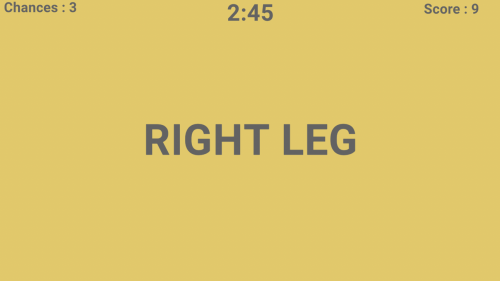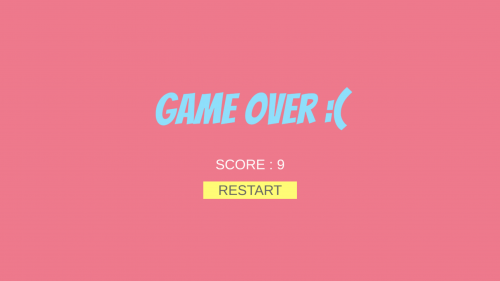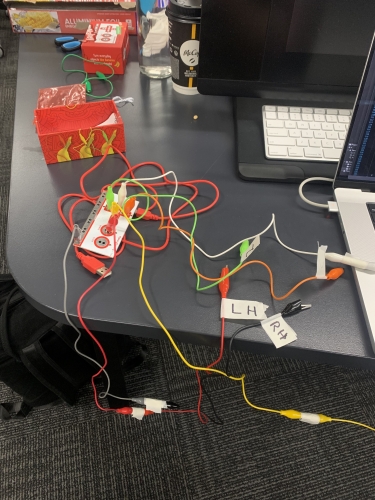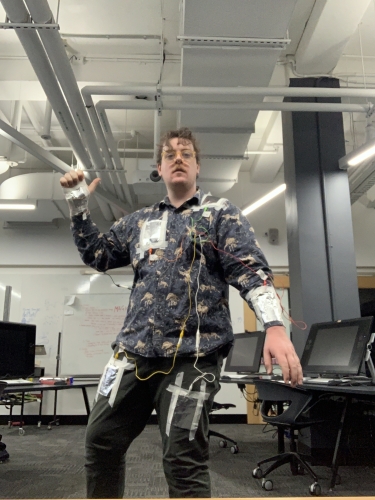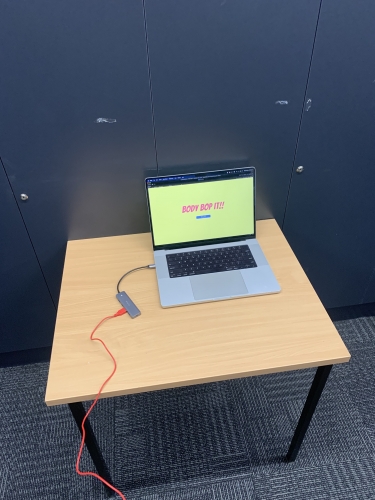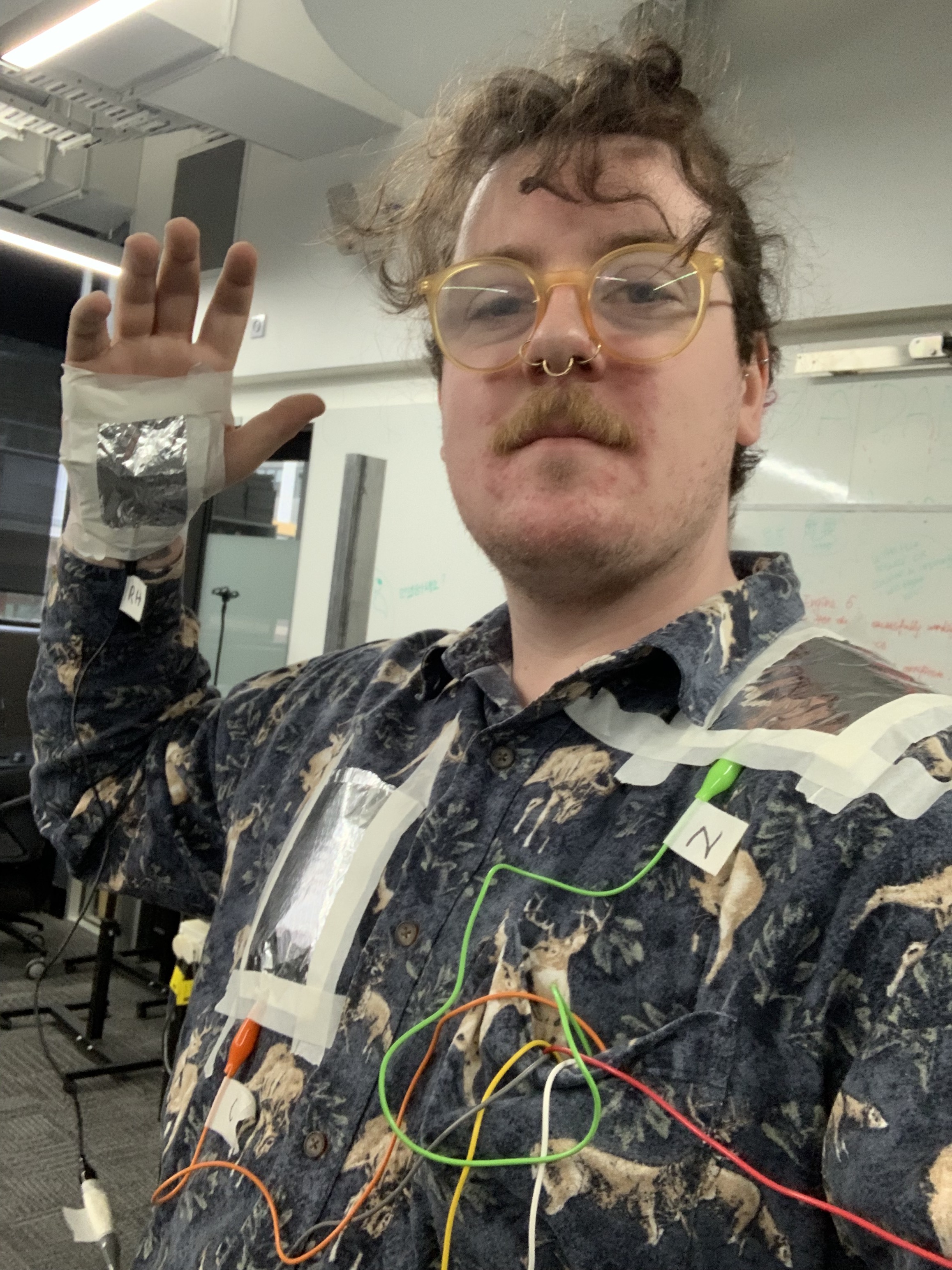
Video documentation of my response is viewable here
Theme :
My first instinct with the theme of Play and Body was to try and make a game that heavily involves the use of the players limbs to play the game. My initial idea, which I discussed with Uyen after the weeks presentation, was to somehow place sensors on a person’s hands and legs, and then write a program that randomises combinations of limbs, and the player would have to make a connection between the limbs within a time frame to get a point, and making the wrong connection or missing a connection 3 times would result in the player losing the game.
My primary inspirations for this week’s response are the party game Twister, which randomises the positions that the player has to place their body in, using a large floor mat, and the kids toy Bop It!, which randomly gives a task to the player with a narrow time frame to complete it, where the goal is to get the highest score possible. I was also inspired by the (now unavailable) app / game Pretzel Pocket, by game designer Tim Snowden, which was an intimate co-op body contortion game that required players to connect randomised body parts with each other.
Method :
I decided to use the Makey Makey to create the body sensors. This did require one limb to be the ‘ground’ on the board to make the circuit, so it would have to always be the same limb connecting with a random other body part. I considered getting around this by instead using an Arduino, connected to a set of digital microswitches, which would allow for more varied connections, but this seemed it would be more impractical and fragile in terms of wiring connections together. Because I decided to stick with the Makey Makey, I altered my idea from having the game generate a random limb combination to generating a random target body part that the player would have to connect the ‘ground’ limb to. I decided to use my right hand as ground / the playing hand, and then use my left hand, left leg, right leg, chest, and neck (initially meant to be the back of the neck, but it ended up being more of the shoulder in the final demo) as the targets.
I built the game in Unity. I first tested the Makey Makey with Unity, assigning each limb a button using the default button maps, to make sure I could get them working. I then programmed the game, incorporating a timer, a score tracker, and life metre that would deplete when a connection was missed or if an incorrect connection was made. I also included a start screen and a game over screen, that displayed the final score, and gave the player the option to replay.
Finally I set up to record a demo of the game with the Makey Makey controller. I used alligator clips (chained together when I needed extra length) to connect the Makey Makey buttons to pads of aluminium foil that I attached to the target body parts, and played a couple rounds of the game, while recording video of myself playing, and screen recording the Unity game.
Context :
Being a game that is heavily structured, with rules and scores, my response this week would come under the category of ludic play (Caillois, 1961), as an experience that is very intentionally designed. The emphasis on playing to achieve a high score also places this response firmly within the Competition category of the Pleasures of Play Framework (Costello & Edmonds, 2007), which focuses on ‘the enjoyment one experiences from trying to achieve a defined goal’.
The assembly of my response, to play-test and document the game, also ties into the Rhetorics of Frivolity (Sutton-Smith, 2001). My response is incredibly impractical, with no way to get around the mess of wires that it required to hook the player up to the computer, but that impracticality was half of the fun. I liked making a response that was supposed to be silly.
Reflection :
The game didn’t quite work the way that I had intended it to. I realised pretty quickly that the sensors couldn’t be touching my actual body, as my body would be conductive, and it would just read all the switches as being pressed at all times. I ended up using masking tape to attach the foil squares to my clothing. This wasn’t a good enough solution, and I found the program constantly thought I was pressing multiple buttons, causing me to quickly lose points / the game. This was improved slightly when I removed the ‘ground’ pad from my hand, and just began touching the end of the alligator clip to the target pad, but this didn’t entirely solve the problem, and wasn’t as satisfying a way to play. I think perhaps if I had used electrical tape to connect everything instead of masking tape, as well as attaching the foil targets to a non-conductive material, like cardboard or plastic, before attaching those to my clothes, it would have worked a little better.
The game is also incredibly impractical. Having to have the Makey Makey and all the targets on my body meant that I was covered in wire, and could only take a couple of steps away from the computer running the program, without risking pulling out the cords and losing power / connection, which means it’s not a user friendly prototype
Finally, I think that the game would have benefitted from an audio cue as to what body part was the current target, rather than just visual. This could have been as simple as voice recordings that played when the target changed, and wouldn’t have been difficult to implement had I thought of it sooner. It also would have made it clearer what was happening in the video documentation of the exercise.
References :
Caillois, R., 1961. “Man, Play and Games". Chicago: University of Illinois Press.
Costello, B. and Edmonds, E., 2007. “A study in play, pleasure and interaction design”. In: Designing Pleasurable Products And Interfaces. [online] ACM, pp.76-91. Available at: <https://dl-acm-org.ezproxy.lib.rmit.edu.au/doi/abs/10.1145/1314161.1314168> [Accessed 8 October 2022].
Sutton-Smith, B., 2001. “The Ambiguity of Play”. Cambridge, Harvard University Press.
About This Work
By Eamonn Harte
Email Eamonn Harte
Published On: 21/09/2022


